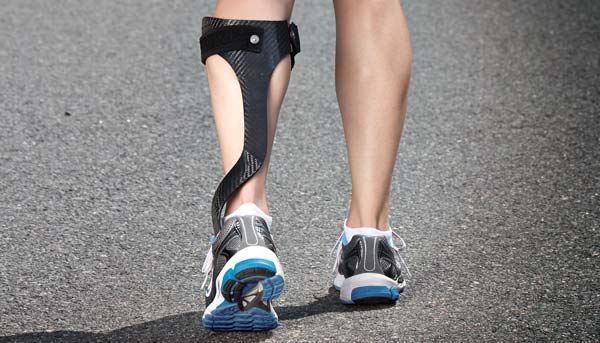
An ankle-foot orthotic, or AFO, is a brace that controls the kinematics and kinetics of the ankles while also compensating for weakening or correcting irregularities.
AFOs can also be used to strengthen limbs that are weak or to move a restricted limb into a much more proper position. Foot dips caused by various neurologic and musculoskeletal problems are also treated with AFOs. Because of its widespread use in correcting foot drop, AFO has now become associated with the term “foot drop brace.”
The insertion of spring to the ankle portion will improve comfort, allowing the person to wear them during his daily routine with discomfort. Compared to conventional orthotics, the carbon springs provide more physiologic ankle and knee kinematics.
This article sums up the Spring-assisted AFO model and item as of late, additionally looks at the benefits and weaknesses and analyzes the functional attributes of the gadgets, at long last sums up the parts of the Spring-assisted AFO to be gotten to the next level.
Ankle-foot orthoses come in a variety of styles. Typically, a special patient’s doctor would propose the best AFO varieties for special patients’ specific needs. However, recognizing the many possibilities will help special patients closely examine special patients’ physician’s suggestions and select which AFO brace kinds are ideal for special patients.
An AFO with an articulated or hinged ankle hinge and a plantarflexion stop allows regulated movement. Special patients’ physicians can alter the range of motion supplied by the orthosis owing to the adjustable hinge. For medial/lateral instabilities, CVA, and broken bones, articulate AFO is often the best option.
It’s not a wise option for people who have diabetes or edema that fluctuates. A leaf spring from the back AFOs provides ankle flexibility, allowing for passive ankle dorsiflexion. This means the patient can walk with a smoother knee-to-ankle action. The bracing provides hard support to the foot at plantar grade as it swings to escape the ground, but it does not give the rigid support that other orthotics do.
This orthotics’ flexible posterior footplate stores energy for each step, creating a miniature spring that propels the patient forward and makes walking easier. Carbon composites, polymeric polypropylene, and Ortolan are the most common materials used in these braces.
Many users find it emotionally challenging to regularly wear an AFO for optimal rehabilitation because of the social stigma. So developing an AFO according to their specific needs will definitely help them in overcoming that challenge.
Instead of wearing a typical rigid AFO, they can wear a spring-assisted one, or AFO’s manufacturing company can seek patients’ help in developing the braces according to their needs. i.e. implementing gadgets for special children. A spring-assisted AFO that combines human logic with a reciprocating engines device to help individuals with low limb growth and muscular vitality is an advantage.
Spring-assisted AFO gives the likelihood to the patients with lower appendage issues to get back to society. Spring-assisted AFO likewise could lessen the weight on families and society.
The product development of Spring-assisted AFO will aim to help patients to walk easily and comfortably. The development and restoration help for various joints, walk, as well as day-to-day routine exercises. The hip exoskeleton robot can work on the strength of the storage compartment, diminish the metabolic utilization, worldwide affects the lower limb concentrated on the force field control for robot recovery.
There are additionally a few business gadgets that have been generally utilized in clinical practice. For instance, LOKOMAT13 is another sort of robot that can reenact physiological stride direction, drive the patient’s one-sided or reciprocal lower appendages, and precisely control the speed of the treadmill to match the patient’s step Consistent, naturally incorporate utilitarian exercise treatment with the patient’s appraisal and input framework.
Ekso Bionics14 is a wearable exoskeleton that gives the capacity to the legs. Intended to help patients stand and stroll during recovery. Hence, this is the main reason why using technology in Spring-assisted AFO is very important.
In a nutshell, the development of Spring-assisted AFO will benefit special patients who will comfortably wear and walk. The ankle-foot orthotic (AFO) is critical in assisting special patients in moving around to the special patient’s full potential. The ankle-foot orthotic (AFO) is by far the most commonly utilized type of orthotic (CP).
AFOs were worn to help with functioning or to prevent muscular atrophied muscles. The benefit of this development will rely on everyday use for the patients, for hours at a stretch, which means special patients need to look after and keep it in good working order.